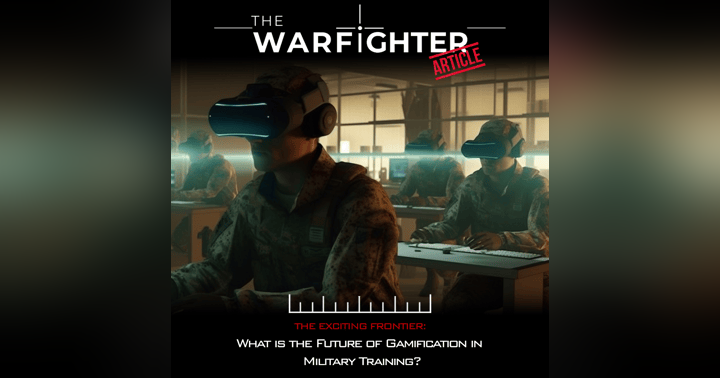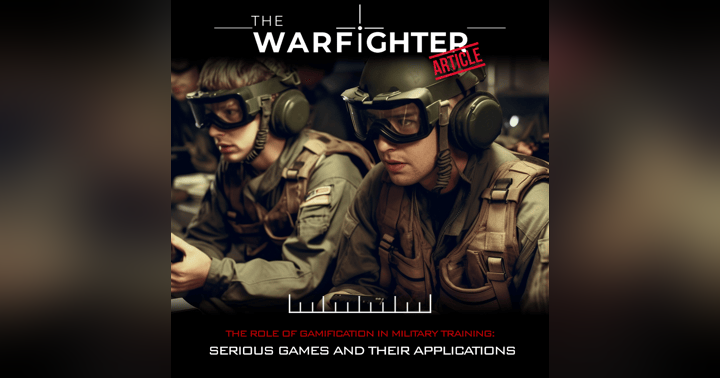How is the Military Using Virtual Reality (VR) to Train?

Introduction
The military has always been on the cutting edge of technology. Whether it's submarines, tanks or bombs, the military has always been able to utilize new technology in order to stay ahead of its enemies. Nowadays, Virtual Reality (VR) is playing an increasingly important role in training soldiers for combat situations. So what exactly is virtual reality?
If you're looking for a great overview from someone already serving in the British Army then we'd highly recommend listening to our below podcast:
What is Virtual Reality?
Virtual Reality (VR) is a computer-simulated environment that can be explored and interacted with by a person. It incorporates mainly auditory and visual feedback, but may also allow other types of sensory feedback like haptic. This immersive environment can be similar to the real world or it can be fantastical; either way, when you're in VR it feels real.
Virtual reality is used for many purposes including military training, film making, video games and health care simulators - just to name a few.
Virtual Reality could be a valuable training tool for the military
Virtual reality (VR) is a cost-effective way to train, and it’s becoming more popular with the military. VR training can be used to simulate real-world scenarios, which is especially valuable for soldiers who have been deployed overseas. For example, use of VR in training allows troops on patrol to experience complex situations like an ambush or IED explosion without putting themselves in danger.
VR also allows soldiers to practice combat skills such as firing weapons or driving tanks without needing access to live ammunition or vehicles—two things that could be difficult or dangerous under actual conditions. It's easy to see how this could benefit military operations in various ways:
-
Soldiers are able to train more often because it doesn't require them using up valuable resources like fuel or ammunition;
-
Soldiers are able to hone their skills more effectively since they're not limited by real-world limitations (for example, there might not be a suitable area nearby where they can fire live rounds);
-
The military gains more control over what kinds of situations soldiers face during training so they can focus on specific tasks rather than having random experiences occur.*
Challenges and Issues with using Virtual Reality for Military Training
There are a number of challenges and issues that need to be addressed before Virtual Reality can be used for military training.
-
Cost: The cost of equipment is high, which may lead to a lag in adoption until the price comes down. In addition, the equipment needs to be maintained on an ongoing basis. This can be expensive during peacetime but becomes even more challenging during times of conflict or war.
-
Training: It takes a lot of time and money to train someone how to use VR equipment, especially if they already have some experience with another kind of technology such as augmented reality (AR). If there were any bugs or glitches in how it was being used, this would impact their productivity while also potentially making them nervous about using the system again in future training sessions.* Software Development: One aspect that makes VR less desirable than other forms of simulation is its inability not only replicate real-life scenarios but also create bespoke defence use cases that no one else has considered previously.* Size & Scale: The size and scale of systems needed for military applications means that only large companies are able to develop them effectively—and these may not necessarily have enough technical expertise required for this kind of application either! Also consider what happens when all these people come together at once? They'll probably end up feeling nauseous from motion sickness because there's too much movement happening all at once."
The second generation of VR simulation came out in the 90s with improved VR goggles.
The second generation of VR simulation came out in the 90s with improved VR goggles. This allowed for better visual experiences and more realistic interactions with the environment. With this new technology, training could be conducted in a virtual environment without endangering human lives. The first use case for this was a military simulation to practice combat maneuvers and tactics without putting soldiers in harm's way.
This second-generation technology has been used by soldiers on every level since its inception, from basic rifleman training all the way up to specialized medical procedures performed by physicians using VR simulators.
The third generation is now available, which consists of a sophisticated headset and super high definition images that are not static as you might expect.
The third generation is now available, which consists of a sophisticated headset and super high definition images that are not static as you might expect. The goggles are equipped with video cameras that show the soldier what he or she is seeing. These cameras track head movement and display an image on the screen in front of you that reacts to how you move your head.
The new technology also includes higher end headsets that provide sight, sound and even smell.
The new technology also includes higher end headsets that provide sight, sound and even smell. While the technology is still in its infancy, it's a big step forward for military training.
This new technology is expensive and not yet ready for the battlefield. But as you've probably guessed, this means that VR can be used to train soldiers without exposing them to real-world dangers. That's why it's being used by militaries around the world to train soldiers in everything from combat tactics to hostage rescue operations.
In the future, robots may be used to relay feedback from real combat situations back to soldiers in the field. This way they can train with the most up-to-date information while still maintaining their position in active combat.
The military is looking into using robots to relay feedback from real combat situations back to soldiers in the field. This way soldiers can train with the most up-to-date information while still maintaining their position in active combat.
This is a great example of how VR is being used to train soldiers, but it also shows how far we have come in terms of technology as well. In the past, it would've been impossible for a soldier to receive detailed information about an enemy they were facing while they were on duty. Nowadays all you need is a virtual reality headset and some kind of drone that can send you images from a camera on its body!
It's becoming clear that VR training is not just a trend but could become a must-have tool for military.
The US Department of Defense is making a big bet on virtual reality (VR) training. The Marine Corps, for example, has committed to spending $11 million on their own VR system, which will train thousands of troops at a time in simulated combat scenarios.
It's becoming clear that VR training is not just a trend but could become a must-have tool for military. Here are some reasons why:
-
More realistic than ever before – VR has gotten very good at mimicking real world conditions. You can no longer tell the difference between what you see in VR and reality because the fidelity level has improved so much over the years. Plus, with advancements like eye tracking and haptic feedback controllers, it’s even more immersive than it would be otherwise!
-
More accessible than ever before – At first glance this seems like an obvious advantage: since everyone owns or has access to at least one smartphone these days (and those devices have all sorts of different screen sizes), there’s no need to worry about buying any additional hardware beyond what they already have! Plus there are tons of free options out there as well if you're looking for something inexpensively priced but still high quality enough where none of your coworkers will notice any difference between using these programs vs playing Candy Crush Saga instead...
Conclusion
As we've seen, Virtual Reality is a powerful tool for training. It gives soldiers the ability to experience real-world scenarios and practice their skills without putting themselves in harm's way. This can save lives both on the battlefield and at home when it comes time for veterans to transition back into society after leaving military service behind them.










